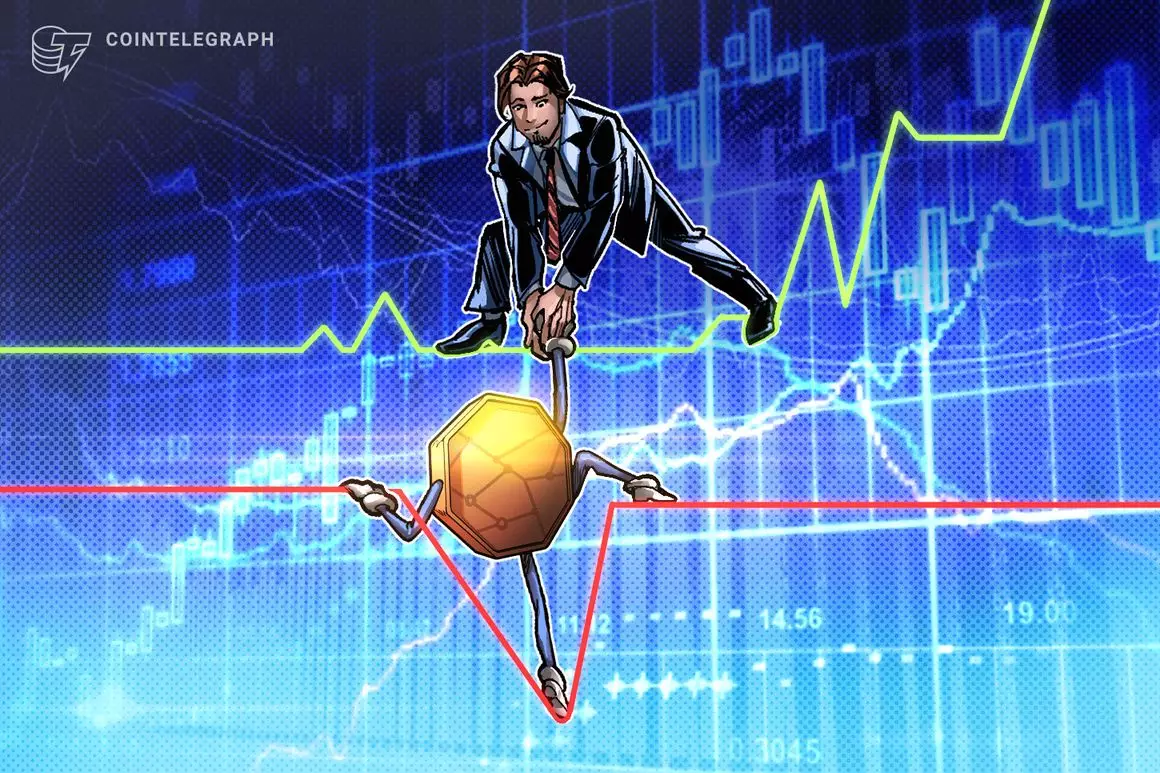The recent decline in the price of Aave’s governance token, AAVE, has raised questions among investors about the future prospects of the decentralized finance (DeFi) sector. Between July 30 and August 1, the token experienced a 17% decline, reaching the $62 level. Although the token has managed to hold the $62 support level, the current price of $64.40 is still 12% below the daily close on July 30. In order to understand this decline, it is important to analyze the various factors that may be exerting pressure on the Aave token price.
One of the key factors contributing to the recent movement in the AAVE token is the risks associated with cascading liquidations on DeFi protocols. This risk was heightened by the Curve Finance pool exploit that started on July 30. However, it is important to note that the Aave protocol has successfully survived similar scenarios in the past, and it currently has a substantial $295.6 million deposited in its Safety Module. This indicates that the protocol has a robust liquidity pool to withstand potential liquidation pressures.
Michael Egorov, the founder of Curve, currently holds a significant loan backed by Curve DAO (CRV) tokens across multiple DeFi applications. This represents a substantial portion of the entire CRV circulating supply and poses risks to the ecosystem. If Egorov’s loan were to face liquidation, it could have repercussions on major protocols, including Aave. However, the current liquidation price for the CRV token appears relatively secure at $0.37. Nonetheless, the high annual percentage yield (APY) that Egorov is paying for this loan raises concerns about potential liquidation risks.
Another factor influencing the performance of AAVE’s token is the stability of the GHO stablecoin. Since its launch on July 16, GHO has been trading below the $1 peg, discouraging borrowers from holding the token due to the lack of DeFi integration and farming opportunities. This selling pressure leads to the depegging of the GHO stablecoin on decentralized exchanges. The instability of GHO indirectly affects Aave’s token performance, as it discourages potential borrowers.
While Aave currently boasts a substantial $5.1 billion in TVL across six chains, it experienced a 12.5% decline in this figure in just one week. In comparison, competitors such as Uniswap and Compound have relatively stable TVL figures of $3.75 billion and $2.23 billion, respectively. However, it is worth noting that Aave’s annualized revenue falls significantly short compared to some competitors, such as Convex Finance and Radiant. This discrepancy in revenue raises questions about Aave’s potential for growth and revenue generation.
Addressing Past Issues and Controversies on Aave
In the past, Aave encountered a bug in its older protocol version (v2) on the Polygon Network implementation, which hindered users from withdrawing $110 million worth of assets in May 2023. However, this issue was promptly resolved within a week, and no funds were reported lost. Another contentious event on Aave took place in June 2021 when a proposal was introduced to prevent a specific account, belonging to Curve founder Egorov, from accumulating further debt. This sparked debates within the community, with some arguing that it infringed upon the principle of censorship resistance in DeFi.
Aave’s Resilience and Potential for Continued Success
Despite the recent decline in AAVE’s token price and TVL, Aave’s decentralized application remains a strong contender in the DeFi space. With a robust insurance fund and protocol fees, the protocol is well-equipped to weather market fluctuations and potential risks. While Aave’s annualized revenue may be lower compared to some competitors, the higher fees it charges leave room for potential future revenue growth. Overall, Aave’s solid foundation and significant TVL signal its resilience and potential for continued success in the dynamic world of decentralized finance.


Leave a Reply